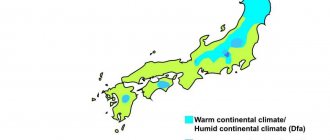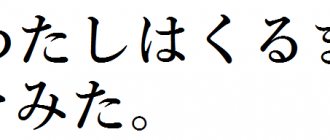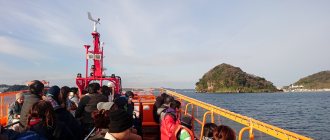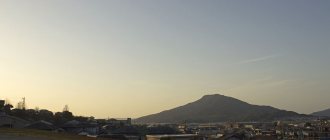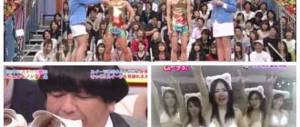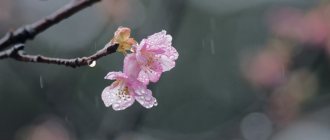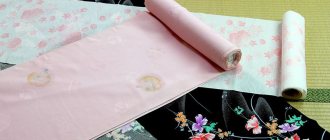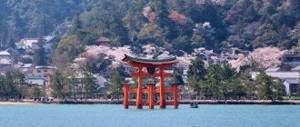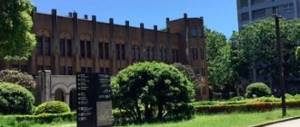Greetings to all readers of my still small blog! Thank you for visiting my page! Not long ago, a 64-year-old man entered one of the domestic universities where a friend of mine studies. For many, this came as a shock, but my uncle, on the contrary, believes that it is not too late to study at any age. And I agree with him! By the way, higher, secondary and primary education in different countries differs radically. Therefore, I propose to discuss today the topic of how this happens in the Land of the Rising Sun and how they study in Japan. What is their learning structure, how long do lessons take and when do the long-awaited holidays begin? Well, let's take things in order.
Structure and gradations
School education in Japan is practically different from any European school. Although, there are still similarities with our educational system. It is not difficult to understand how education is structured - primary and secondary education is free and compulsory. But high school (higher school) is a paid pleasure and a must for anyone who dreams of studying at a Japanese university.
In total, Japanese schoolchildren study for 12 years:
- primary education: grades 1-6;
- secondary education: grades 7-9;
- senior education: grades 10-12;
Typically, there are up to 40 children in each class. In elementary grades, there is one teacher, starting from middle grades, teachers are divided by discipline. As a rule, students are always in the same room, only teachers come.
Higher education
The higher education system in Japan is similar to the European and American systems. After four years of study, the student receives a bachelor's degree and can either look for a job or continue scientific work.
For those who went to high school after middle school, there is the opportunity to go directly to the third year. Because in the first two, students, as a rule, decide on an interesting direction, and from the third, specialization begins.
Higher education in Japan can be obtained at private and public universities. But everyone strives to enter government schools. There are several reasons for this:
- it is believed that there is better education there;
- a diploma gives an advantage when applying for a job;
- tuition fees are significantly lower.
For comparison, studying at the Faculty of Medicine at the University of Tokyo will cost 3.5 million yen (1.3 million rubles) for six years of study.
And studying at a private university in the same specialty costs more than 30 million yen (more than 21 million rubles). At the same time, it is very difficult to enter a state university. If to study at a private university it is enough to show the results of the Central Exam, pass the entrance examination and consistently pay the prescribed amount once a year, then for a public university, in addition to all of the above, you will have to write a motivation letter and become the best among the other applicants, passing a crazy competition.
Another interesting fact: there is also no approved program in Japanese universities. Students themselves choose subjects that interest them, but no more than 25. It is believed that with a larger number, the student is not able to concentrate and study well, and a smaller list of subjects will not allow him to gain the required number of credits for successful studies.
Grading system in Japanese universities
The level of education in Japan is very high because universities place high demands on their students. Thus, the best institutions in the country set for students the number of credits that they must earn over the entire period of study. Each item is worth two points. Academic performance is also affected by attendance, writing papers, test results and exams.
Ratings are given on a five-point scale:
- highest score - A;
- average scores - B, C, D;
- The lowest grade at which you need to retake the course is F.
Exams at universities are only written and based on the material of the entire course. Therefore, you need to constantly prepare and repeat the material. At the slightest suspicion of cheating or plagiarism, you can lose all the points earned for the year and even be kicked out of the university.
The Japanese are also taught to work, as well as to constant learning, from childhood. Neither the school nor the university have cleaners. Pupils and students clean the entire territory themselves.
Employment for students
A huge plus of many universities in the Land of the Rising Sun is that the educational institution itself looks for jobs for its students in its senior years. The rating of the university and the subsidies it can count on from the state depend on the number of employed people.
Also, many companies select the most promising students already in their first year and help with tuition fees, so that after receiving a diploma, this specialist will come to work for them.
Previously, the Japanese worked in one place all their lives. Losing a job was a terrible tragedy - after all, the chance of finding a new one was close to zero. But in modern Japan, this tradition is gradually becoming a thing of the past, and people can change places and specializations if they wish.
Academic year
The prosperous country has perhaps the longest school year in the world - 240 days. The new academic year begins in April and lasts three semesters. In the middle of each term, middle and high school students take compulsory exams. The Japanese have vacations in summer, winter and spring, only 3 times a year.
Here's how it all happens:
The end of the school year falls on the last days of March and is called “卒業” (そつぎょう・ “sotsugyo”).
After this comes a short spring break, on average 7-10 days. Around April 6-7, “入学式” (にゅうがくしき・ “new: gakushiki”) is held, the meaning is similar to September 1. And as a rule, the next day, they begin classes. So, children study until the summer holidays.
Usually, they begin with “Sea Day”, which is celebrated on July 18 (海の日) and is a day off. If this is preceded by a Sat or Sunday, then the holidays begin with them. For example, this year, Japanese schoolchildren are lucky; they will start resting on the 16th. Well, then the summer holidays continue until the end of August and in September, everyone goes to school. After a long summer vacation, now I will have to do it until the end of the year.
By the way, the vacation period depends on the school and not in all educational institutions, it is absolutely the same. On average, many people begin to rest from December 26 to January 7. But there are also those where there are much more days off or, on the contrary, fewer. For example, looking at the data on the winter holidays of 2015-2016, I noticed that some vacationed for only 10 days - until January 4 (on the island of Okinawa in Naha), and somewhere as many as 27 days - until the 20th (about .Hokkaido in Sapporo and Iwate province, Morioka). It is very possible that one of the factors is the influence of climatic and weather conditions.
Interesting point. Japanese schools don't have numbers like ours. They are given the names of the area where they are located. For example, “Maruoka High School”, “Junior State. Yoshino School" in Osaka and so on.
Exams in Japanese schools
Exams are taken when students move on to the next stage of their studies. Some time ago, failing a high school exam was considered almost a disgrace, but now the attitude has changed, and therefore teenagers often get jobs after graduating from high school.
Examinations are usually given in the form of written or oral texts. In most cases, during such an exam you have to fill in blank lines in the text, which is an imperfect method. But despite this, it is quite common, including in the UK.
<What bouquets are given in Japan?
Wedding at the Japanese amusement park Sanrio Puroland>
Initial training
It is called “shogakko” (from the words: “小“ “sho:” - small; “学校“ “gakko:” - this is a school), they study here for 6 years. To get into it, Japanese children take tests. If you fail to pass the exam well, you are sent to preparatory training. After it, the kids will 100% enter primary school.
On average, the children have no more than 4 lessons per day. The subjects that primary schoolchildren study are their native language, chemistry, arithmetic, physics, biology, drawing, music, physical education and basic home economics. There are homework assignments, but not that many. School starts after 8 o'clock and ends after lunch (depends on the school individually).
Average level
It is called "chu:gakko"・中学校 (“中“ is the middle one). The training lasts 3 years. Here they study the state language, mathematics, humanities, natural sciences, and English. Physical education and labor education are also among the compulsory subjects. It is interesting that in addition to this, upon entering middle school, students are required to join some club offered by the school. This could be: music, sports, in some schools there is an artistic direction. Those. In addition to all compulsory disciplines, schoolchildren study at their own discretion with a school orchestra consisting of the same children, in a tennis or baseball group, for example. It's common to see boys dressed in nice baseball uniforms on a Saturday afternoon at school stadiums - the sport is very common in Japan. It must be said that in some classrooms the basics of religion and ethics are taught. High school students have voluminous and complex homework.
conclusions
It is best to learn interesting facts about life in Japan not from television programs or via the Internet, but from your own experience. Having the opportunity to obtain a higher education in this country, a Russian citizen will not only receive enormous experience, but also a diploma that is valued all over the world. If we add to this fluency in Japanese, then such a specialist has very good prospects for a future career in Russia or other countries.
However, we should not forget that obtaining higher education in Japan is limited by the high cost of education, which is several times higher than in Russia or the CIS countries.
Uniform
Primary school students are exempt from wearing special uniform clothing. They are allowed to wear theirs. Some primary education institutions have uniforms. For boys - a white shirt, short shorts and a cap. Pants can only be put on when moving to medium. Girls wear long gray skirts and white blouses.
Backpacks are of particular importance for schoolchildren, their prices can vary from about 7000 yen to 70-80 thousand (about 58-650 euros), they can use one backpack for a very long time. One of my friends had a child go to first grade, and to her joy, the school itself purchased backpacks for the children - in the end the backpack cost only 8,000 yen. This is for the better, because when everyone has the same thing, you don’t want to get what your neighbor has.
But the other girl was less fortunate, their school was elite and a kind and wealthy granny decided to please her granddaughter by buying a very expensive backpack for 74 thousand yen! Crazy price for a small child, in my opinion. Although, this is already decided by the parents. So. In secondary and higher schools, uniforms are a mandatory attribute. The guys wear formal suits, similar to military uniforms, dark in color, and a white shirt. Girls - dark knee-length skirts, sometimes sundresses, light blouses, sailor suits, knee-length socks and flat shoes. The length of the skirts is fixed, but many girls roll them up to make them shorter - yes, we had this too :)).
Each school tries to come up with its own unique clothes so that they differ in color or details. And it made her stand out from the rest. Japanese students are required to have a change of shoes, and each student has their own locker. First of all, the children run to him to put away their street shoes.
Interesting features
You have already learned a lot of unusual things about Japanese education. I'll add a few more interesting facts.
The cleaning is done not by technicians, but by students. They are divided into groups, each cleaning their own area.
Every educational institution has a nutritionist who makes sure that children eat properly.
In elementary and middle grades, they eat right in the classroom. A cart arrives with a ready-made lunch, having laid it all out on plates, the schoolchildren sit in their seats and eat. In high school, most often, students bring a bento (a box of ready-made lunch) with them and eat it in their class as well.
You can only come to many schools with your natural hair color. If the hair is dyed, they can kick you out. The same goes for earrings and manicure.
Students are only allowed to wear socks of certain colors - black, white, dark blue. Socks of a different color may be confiscated.
With this, I say goodbye to you and hope that my article was informative. I remind you that you can subscribe to my blog updates and share the news on social networks. Have a nice day!
Lika Raido

